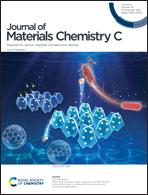Organic-semiconductor nanoarchitectonics for multi-valued logic circuits with ideal transfer characteristics
Abstract
We introduce a rational design approach to high-performance multi-valued logic circuits. Taking an organic-based ternary inverter as a model system, robust input parameters to a two-dimensional finite-element solver are estimated. Physical simulations on key structural, materials, and interface parameters are then carried out, focusing on a technologically relevant input–output voltage relationship. Junction-length scaling, semiconductor film thickness, carrier mobility, and injection energy are found to be critical to logic-transfer behavior, revealing a possible optimized state with all essential operating points simultaneously secured.



 Please wait while we load your content...
Please wait while we load your content...